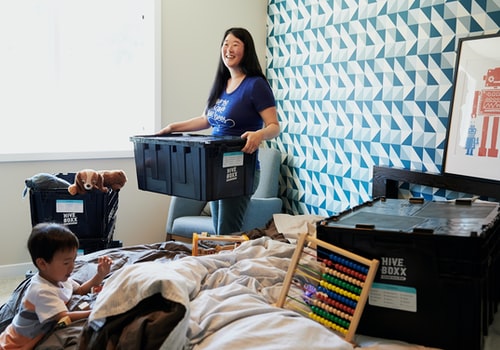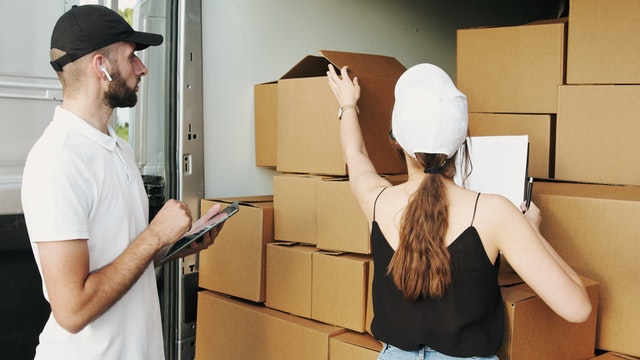Preparing for a checklist for moving into a new house but don’t know where to start and what to add? You are not alone in this!
Moving to a new home is a major life event that can be both exciting and overwhelming. Whether you’re a first-time homebuyer or a seasoned mover, there are countless details to consider and tasks to complete. That’s where this ultimate moving guide comes in handy.
Fear not, my friend! I have designed this article to help you navigate the entire moving process easily and efficiently.
From creating a detailed moving plan to packing your belongings like a pro, we’ve got you covered. I will provide you with expert tips, time-saving hacks, and a comprehensive checklist to ensure a smooth and stress-free move.
So, whether you’re moving across town or the country, this guide will be your trusted companion. Let’s begin this moving journey together and make your transition to your new home a success!
Complete Checklist for Moving Into a New Home

Moving into a new home is an exciting adventure, but it can also be overwhelming. To help you navigate this transition smoothly, here’s a comprehensive checklist of things to keep in mind. This guide will ensure you don’t miss any crucial steps and help you settle into your new home with ease.
So, here’s everything that you need:
1. Final Walk-Through
Before you officially move in, do a final walk-through of your new home. Check for any damage or issues that might have occurred since your last visit. Here’s what to look for:
- Faucets and Plumbing: Ensure there are no leaks.
- Toilets: Flush them to check for proper functioning.
- Circuit Breaker: Label and test it.
- Water Heater: Run hot water to ensure it’s working.
- Smoke and Carbon Monoxide Detectors: Test them for safety.
- Outlets and Lights: Make sure all are operational.
If you find any problems, document them and contact the seller or landlord immediately.
2. Plan Ahead
Planning is the backbone of a successful move. Ideally, start at least a month before your move date. Begin by creating a “moving timeline” with weekly goals, like decluttering, scheduling movers, and packing specific rooms.
If you’re hiring movers, book them early to secure your preferred moving date. You might also want to book any other services, like cleaners, for the home you’re leaving or entering.
This timeline keeps you organized and prevents you from feeling overwhelmed as the moving day approaches.
3. Declutter Your Belongings

Decluttering is not just about reducing the number of boxes you need to move. It’s an opportunity to reassess what you own and keep only what truly adds value to your life. Go room by room, sorting items into piles: “Keep,” “Donate,” “Sell,” and “Trash.”
Consider the “one-year rule”: if you haven’t used an item in the last year, it may be time to let it go. Host a garage sale or use online marketplaces to sell items and donate anything that is still usable but not worth selling.
4. Pick What To Pack

Seeing all your belongings scattered on the floor right in front of you can make anyone panic. Instead of fretting about having a lot to pack, decide what essentials you should pack and what can be stored.
You can keep things in storage units that you might not need immediately after moving. The best thing is that it’s not difficult to find storage units.
For instance, if you are moving to Garland, Texas, search online for Garland storage units to store the items that you won’t immediately need. This will reduce the hassle of your moving.
5. Choose a Moving Company
If you have planned to pack and move everything on your own, you might have to start moving your belongings to the new place a week or two earlier.
Instead of making several trips while moving your stuff, hire a moving company. Ask them about their moving services and the preventive measures that they offer to transfer your belongings without any damage.
Gather Supplies

Running out of boxes or tape while packing can add unnecessary stress. Make a list of supplies you’ll need, including various sizes of boxes, packing tape, bubble wrap, and markers.
For fragile items, you’ll need extra padding—bubble wrap is great, but you can also use things like towels, blankets, or even clothes for wrapping delicate items.
Don’t forget specialty boxes for items like mirrors, artwork, or TVs to keep them safe. If you have kids or pets, pack a separate box for their essentials and comfort items to help them feel secure.
Pack Your Stuff Properly

Although many moving services offer insurance while moving your belongings, it also depends on packing your stuff. Your safety and health are imperative, but your moving experience becomes better knowing that all your belongings are safe.
Packing your crockery or other glassware wrapped in blankets will prevent them from harm and external pressure. Pack and disinfect your containers with visible touchpoints to prevent yourself from contracting any disease.
If you do not want tons of boxes, you can pack your glassware and vases in your blanket container. It will reduce the burden of handling extra packages and save space for other things.
Change Your Address
For a seamless transition, change your address with the postal service to redirect your mail to your new home. This can typically be done online through the USPS website if you’re in the U.S.
Notify your bank, employer, insurance companies, and any subscription services (like magazines or meal delivery) about your new address. Consider keeping a checklist of all these contacts to ensure you haven’t missed anyone.
Consider the Layout of Your New Home

Before you move, take some time to think about how your furniture will fit into your new space. Measure larger items and check that they will fit through doorways and into designated rooms.
If you can visit your new home before moving day, make a basic floor plan of where things will go. This planning will make moving day more efficient and help you avoid moving heavy items more than once.
If you’re hiring movers, you can even share this floor plan to help them place furniture in the right spots.
Read More:




























